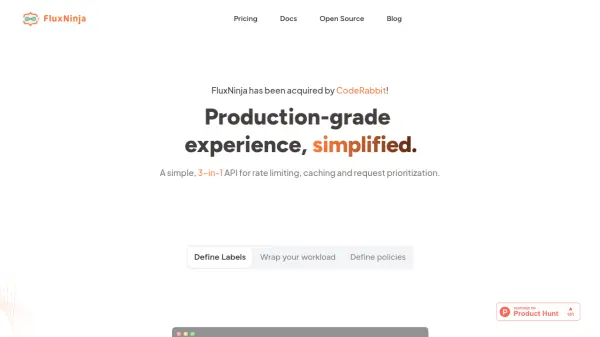What is FluxNinja Aperture?
FluxNinja Aperture is an advanced load management platform specifically engineered for modern application workloads, including Generative AI, Serverless, and Cloud Native environments. It offers a unified solution to control and optimize application performance and cost through a combination of rate limiting, caching, and request prioritization functionalities.
The platform enables fine-grained control over request flows, helping organizations optimize costs associated with pay-as-you-go APIs like OpenAI and manage load on self-hosted infrastructure. Its caching capabilities enhance application speed and reduce redundant operations, while request prioritization ensures that critical requests are processed reliably, even during peak load or when facing external service limitations. FluxNinja Aperture also provides comprehensive workload observability features to inform control decisions and policy design, integrating with services via SDKs or proxies and offering flexible deployment options, either serverless managed by FluxNinja or self-hosted within the user's infrastructure.
Features
- Rate & concurrency limiting: Optimize cost, ensure fair access, regulate API usage (e.g., OpenAI), and reduce load on self-hosted infrastructure.
- Cache as a service: Boost application speed, reduce costs by caching costly operations, and prevent duplicate requests to pay-per-use services.
- Request prioritization: Ensure optimal performance of critical requests during peak hours or when facing external API limits.
- Workload observability: Provides comprehensive metrics and insights for driving control decisions and designing effective policies.
- Flexible Insertion: Integrates with services through SDKs and proxies.
- Multiple Deployment Options: Choose between a serverless offering managed by FluxNinja or deploying agents within your own infrastructure.
Use Cases
- Managing rate limits for pay-as-you-go APIs like OpenAI.
- Optimizing operational costs for Generative AI applications.
- Ensuring fair resource access across multiple users or services.
- Improving application responsiveness and speed through caching.
- Prioritizing critical transactions during high traffic periods.
- Protecting backend services and infrastructure from overload.
- Implementing load management for serverless architectures.
- Controlling request flow in cloud-native applications.
Related Queries
Helpful for people in the following professions
Featured Tools
Join Our Newsletter
Stay updated with the latest AI tools, news, and offers by subscribing to our weekly newsletter.







